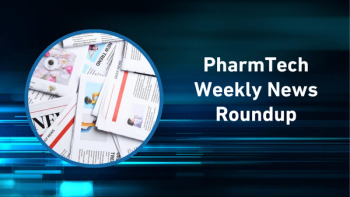
The Bio/pharma Industry Navigates AI’s Impact on Workforce and Hiring
Key Takeaways
- AI is driving a shift in pharma towards data-intensive processes, requiring rapid upskilling and organizational agility.
- The industry struggles to attract tech talent due to competition from big tech and regulatory inertia.
A panel at CPHI Frankfurt discussed how AI is transforming pharma talent, necessitating rapid upskilling, bias mitigation, and regulatory changes.
During the panel discussion " AI’s Impact on the Pharma Workforce and Hiring: From Obsolescence to Opportunity" at
How are skills and organizational agility evolving?
The pharmaceutical sector, especially in manufacturing, is rapidly moving away from purely mechanical operations toward data-intensive, technologically advanced processes, according to the discussion. The panelists note that while the industry’s maturity is "increasing fast," the skills needed to support this evolution are lagging. Historically, manufacturing relied on "people on the lines trying to get the status and how things went wrong." Now, the integration of AI, robotics, and supercomputing is expected to "amplify how your workforce can manage."
In response to this accelerated change, organizations must fundamentally rethink their approach to talent management. Instead of relying on rigid "succession bonds," companies need to be highly agile, the speakers state. One key challenge is defining future needs by asking: "‘What kind of problems do I need to solve for the future? And then I need to define what is the most important skill, and then slice and dice it." This agile approach also necessitates resource fluidity, asking if a needed skill exists in another business unit and if you "can.. just borrow it."
This need for adaptation impacts the traditional concept of skill refresh cycles, which have drastically shortened, according to the panel. In the past, refreshing skills took three to five years, or even ten years; now, it is needed "every six to 12 months." This constant need for development is challenged by employee mindset, as upskilling is difficult because "people don't know what's in it for [them, asking] ‘Why should I upskill [my employees]?’" However, companies are beginning to reward and recognize proficiency through programs that offer awards or badges for certain skills.
How can pharma compete with tech talent and overcome regulatory inertia?
As the panel discussed, a major hurdle for the biopharmaceutical industry is attracting high-tech talent, who now have more choices than ever due to advancements in technology. The industry has "lost talent to other industries," and the traditional path of "you go to university, you do chemistry, you move up… doesn't exist anymore." It is difficult to attract these professionals when "everybody wants to work at Microsoft.” The concept of "taking talent from technology in particular is really difficult."
To manage technological gaps, smaller players in particular should strategically leverage partnerships, continued the discussion. Instead of trying to "be more things than what we wanted to be doing," companies should focus on what they are good at and utilize partners for "the technology pieces," the speakers agree.
Beyond talent competition, the industry faces inertia rooted in its operating environment, the panelists stated. When asked why the industry is often "too traditional," the most common response to is the regulatory framework within which the industry operates, they said. This framework is often cited despite highly regulated industries like automotive already operating plants 20 years ago that "were more advanced than plants in the pharma industry that are being built today." Achieving change requires momentum "at a regulatory framework level," alongside building a convincing "business case of why should we be doing something?"
What is AI’s role in recruitment and bias mitigation?
The discussion turned to vital role of the human element despite AI’s increasing integration into recruitment. Recruiting leaders use AI to reduce administrative tasks, thereby giving them free time to speak with the candidates. AI should be seen as an opportunity to amplify human capabilities, the panelists note.
However, the rapid adoption of AI introduces significant bias risks, with the key to mitigation lying in AI design. It was stated that if the AI is designed around a company’s "most common unconscious bias that people do as they recruit in their own design," the resulting tool will perpetuate that bias. To counteract algorithmic biases and "Chat GPT bias" from candidates who optimize their applications, companies are increasingly utilizing "assessment centers where you basically invite the candidates... and then you let them interact, give them case studies, so that you really can see, without using a tool, how good they are."
How is IP protected while preparing the next generation?
The speakers note that a central challenge for “big pharma” in leveraging collective data is the protection of intellectual property (IP), adding that companies are "very conscious about opening up," maintaining a "very close environment" around their organization. The solution to balancing technological advantage with IP protection relies on partnerships, they say. This approach allows companies to feed AI infrastructure within their established economic framework, offering a level of comfort that avoids exposing internal IP to a broader, global tool. Furthermore, new regulatory frameworks are needed to protect IP while allowing "the advantage of the technology and its capabilities."
New entrants graduating into this environment must recognize that the future career path is not vertical but horizontal, embracing "gig work," according to the panelists’ discussion. While academics often struggle with the concept of non-linear careers, the greatest predictor of success for young adults is "the adaptability to learn." Networking is essential, and graduates "need to have a very, very good network."
Looking ahead, the speakers stated that while generative AI is now "at a plateau," having yielded significant productivity gains, the "next development space" is "agentic AI." This next phase will lead to scenarios in which employees have a machine, avatar, or agent as a "colleague." Despite these accelerating changes, efforts toward standardizing the collective use of AI technology across the sector are not currently visible, meaning "everybody here is slightly different."
Newsletter
Get the essential updates shaping the future of pharma manufacturing and compliance—subscribe today to Pharmaceutical Technology and never miss a breakthrough.





